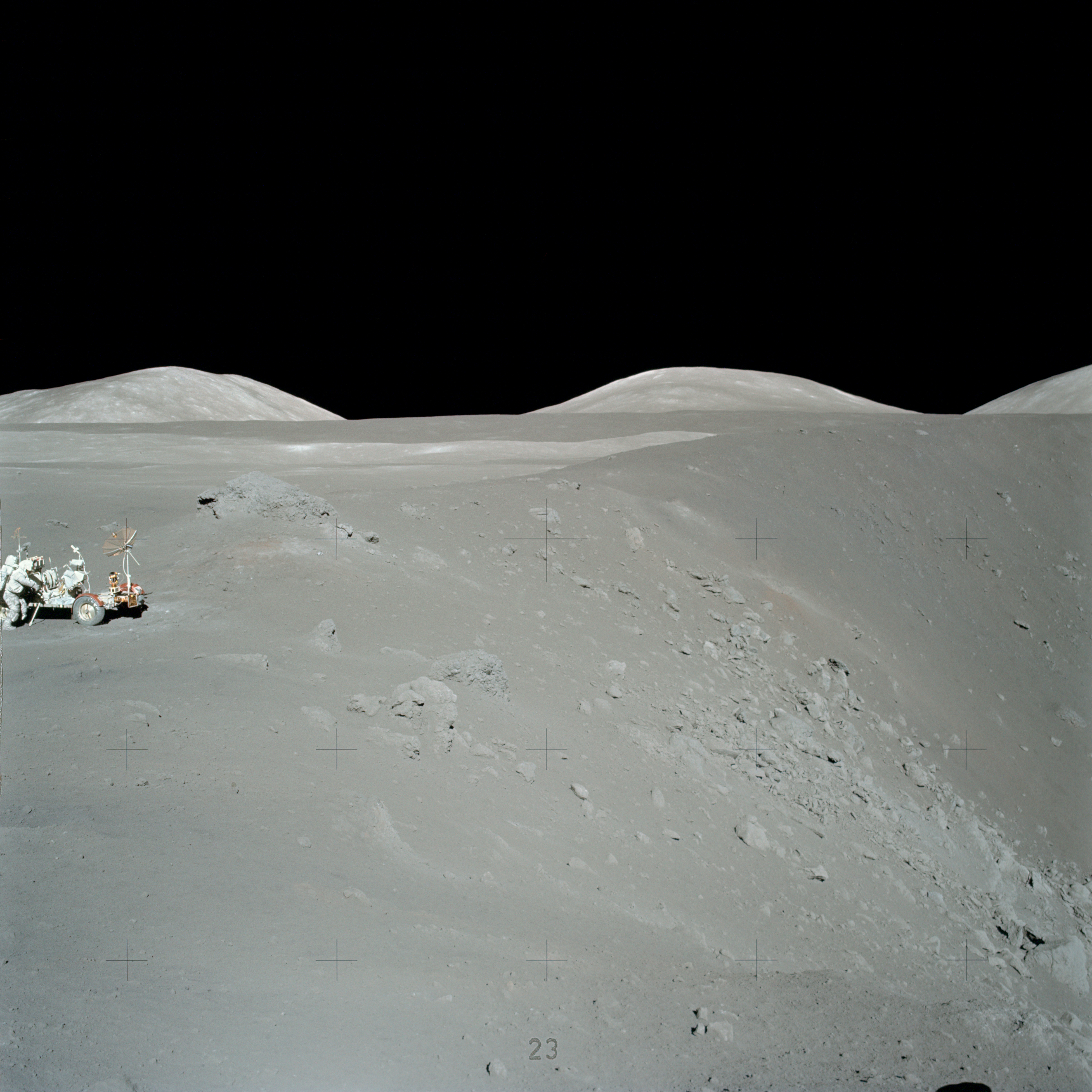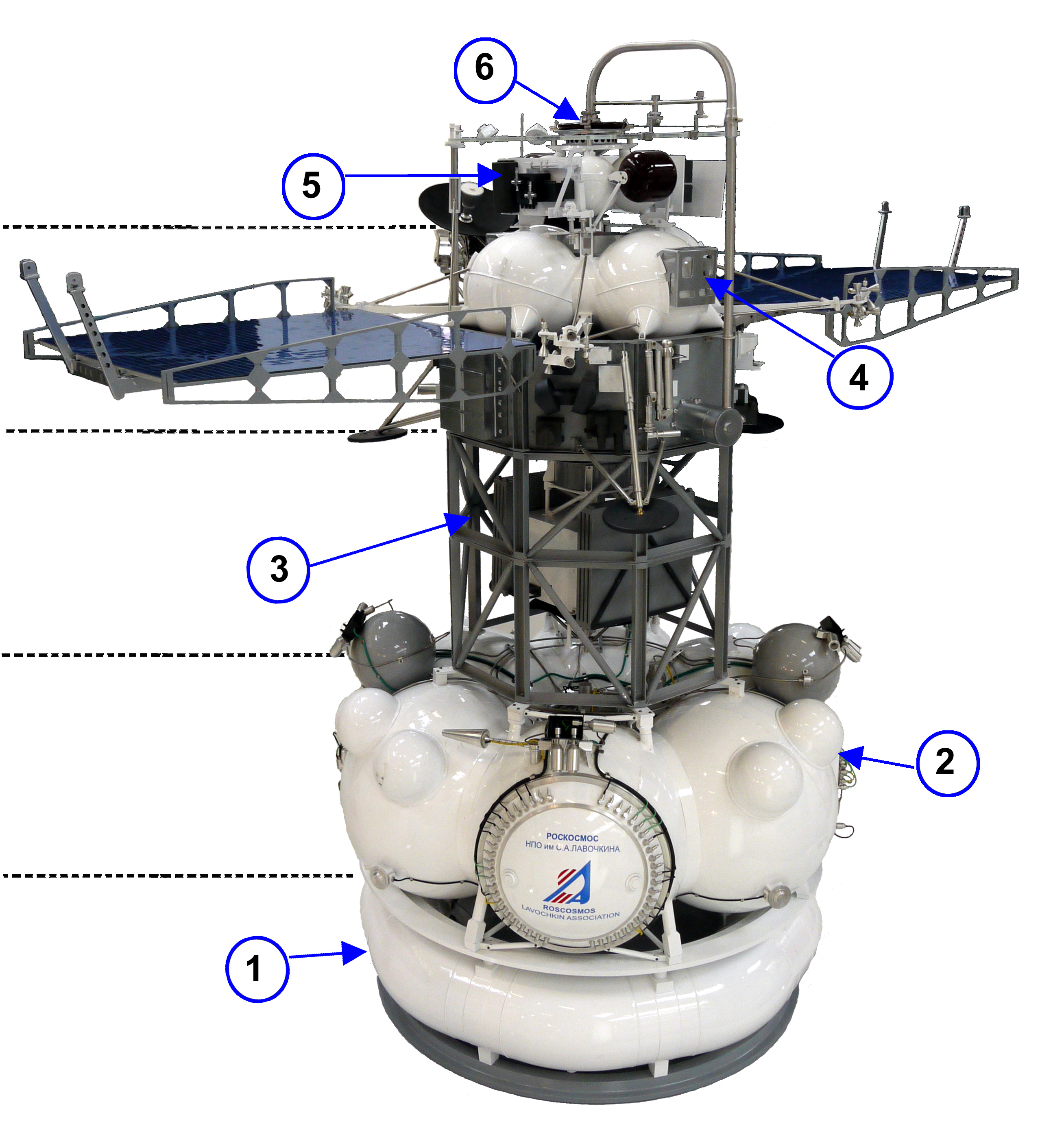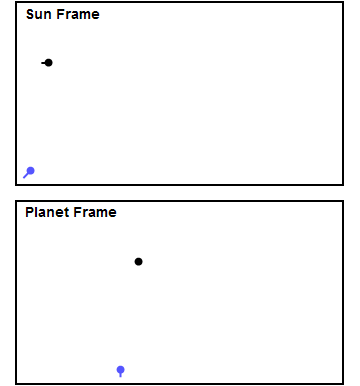|
Tianwen-2
''Tianwen-2'', formerly known as ''ZhengHe'', is a planned Chinese asteroid sample-return and comet exploration mission that is currently under development. Overview ''Tianwen-2'' is planned to be launched by a Long March 3B rocket around 2025. It will use solar electric propulsion to explore the co-orbital near-Earth asteroid 469219 Kamoʻoalewa and the main-belt comet 311P/PANSTARRS. The spacecraft will rendezvous with Kamoʻoalewa and conduct remote sensing observations in orbit, before landing on the asteroid to collect a sample of of regolith. A nano-orbiter and nano-lander will be deployed to conduct remote sensing and sampling observations, and explosives will be used to expose potential subsurface volatiles for detection. The spacecraft will use both anchor-and-attach and touch-and-go methods to attempt collection of a sample from the asteroid. It would be the first time an anchor-and-attach method has been used on an asteroid, as both OSIRIS-REx and ''Hayabusa2'' ... [...More Info...] [...Related Items...] OR: [Wikipedia] [Google] [Baidu] |
Tianwen-3
''Tianwen-3'' is a planned interplanetary mission by China to send two spacecrafts (an orbiter/Earth-returner and a lander/ascent-vehicle) via two separate launches to Mars. Together, the two spacecrafts will seek to obtain samples of Martian rocks and soil and then return the cached samples to Earth. Overview In summer 2022 during a deep space exploration technology forum held at Nanjing University, Sun Zezhou, chief designer of the Tianwen-1 mission, detailed plans for a Mars sample-return mission based on a two-launch architecture. The mission, which appears to have the backing of senior government and space-industry authorities, is known as "Tianwen-3" and constitutes part of the Tianwen series of space missions. The current mission architecture envisions two launches during 2028 by the Long March 5 carrier rocket. One launch occurring in November 2028 will send an orbiter/return-vehicle on a " Trans Mars Injection" trajectory; this spacecraft is anticipated to enter Ma ... [...More Info...] [...Related Items...] OR: [Wikipedia] [Google] [Baidu] |
Sample Return
A sample-return mission is a spacecraft mission to collect and return samples from an extraterrestrial location to Earth for analysis. Sample-return missions may bring back merely atoms and molecules or a deposit of complex compounds such as loose material and rocks. These samples may be obtained in a number of ways, such as soil and rock excavation or a collector array used for capturing particles of solar wind or cometary debris. Nonetheless, concerns have been raised that the return of such samples to planet Earth may endanger Earth itself. To date, samples of Moon rock from Earth's Moon have been collected by robotic and crewed missions, the comet Wild 2 and the asteroids 25143 Itokawa and 162173 Ryugu have been visited by robotic spacecraft which returned samples to Earth, and samples of the solar wind have been returned by the robotic ''Genesis'' mission. Samples from the asteroid 101955 Bennu are en route back to Earth and are expected to arrive in September 2023. In ad ... [...More Info...] [...Related Items...] OR: [Wikipedia] [Google] [Baidu] |
469219 Kamoʻoalewa
469219 Kamoʻoalewa (), provisionally designated , is a very small asteroid, fast rotator and near-Earth object of the Apollo group, approximately in diameter. At present it is a quasi-satellite of Earth, and currently the smallest, closest, and most stable known such quasi-satellite. The asteroid was discovered by Pan-STARRS at Haleakala Observatory on 27 April 2016. It was named , a Hawaiian word that refers to an oscillating celestial object. The Earth-like orbit and lunar-like silicates may be a result of it being lunar ejecta. Discovery and naming ''Kamoʻoalewa'' was first spotted on 27 April 2016, by the Pan-STARRS 1 asteroid survey telescope on Haleakalā, Hawaii, that is operated by the University of Hawaii's Institute for Astronomy and funded by NASA's Planetary Defense Coordination Office. The name ''Kamoʻoalewa'' is derived from the Hawaiian words ''ka'' 'the', ''moʻo'' 'fragment', referring to it being a piece broken off a larger object, ''a'' 'of', and ... [...More Info...] [...Related Items...] OR: [Wikipedia] [Google] [Baidu] |
Sample-return
A sample-return mission is a spacecraft mission to collect and return samples from an extraterrestrial location to Earth for analysis. Sample-return missions may bring back merely atoms and molecules or a deposit of complex compounds such as loose material and rocks. These samples may be obtained in a number of ways, such as soil and rock excavation or a collector array used for capturing particles of solar wind or cometary debris. Nonetheless, concerns have been raised that the return of such samples to planet Earth may endanger Earth itself. To date, samples of Moon rock from Earth's Moon have been collected by robotic and crewed missions, the comet Wild 2 and the asteroids 25143 Itokawa and 162173 Ryugu have been visited by robotic spacecraft which returned samples to Earth, and samples of the solar wind have been returned by the robotic ''Genesis'' mission. Samples from the asteroid 101955 Bennu are en route back to Earth and are expected to arrive in September 2023. In ad ... [...More Info...] [...Related Items...] OR: [Wikipedia] [Google] [Baidu] |
Planetary Exploration Of China
The Planetary Exploration of China (PEC; ), also known as Tianwen (), is the robotic interplanetary spaceflight program conducted by the China National Space Administration (CNSA). The program aims to explore planets of the Solar System, starting from Mars, and will be expanded to Jupiter and more in the future. The program was initially known as the Mars mission of China at the early stage. It was later announced as Planetary Exploration of China in April 2020. The series of missions was named ''Tianwen''. The first mission of the program, Tianwen-1 Mars exploration mission, began on July 23, 2020. A spacecraft, which consisted of an orbiter, a lander, and a rover, was launched by a Long March 5 rocket from Wenchang. The Tianwen-1 was inserted into Mars orbit in February 2021 after a seven-month journey, followed by a successful soft landing of the lander and ''Zhurong'' rover on May 14, 2021, making China the second country in the world to successfully soft-land a fully opera ... [...More Info...] [...Related Items...] OR: [Wikipedia] [Google] [Baidu] |
Zheng He
Zheng He (; 1371–1433 or 1435) was a Chinese mariner, explorer, diplomat, fleet admiral, and court eunuch during China's early Ming dynasty. He was originally born as Ma He in a Muslim family and later adopted the surname Zheng conferred by the Yongle Emperor. Commissioned by the Yongle Emperor and later the Xuande Emperor, Zheng commanded seven expeditionary treasure voyages to Southeast Asia, South Asia, West Asia, and East Africa from 1405 to 1433. According to legend, his larger ships carried hundreds of sailors on four decks and were almost twice as long as any wooden ship ever recorded. As a favorite of the Yongle Emperor, whom Zheng assisted in the overthrow of the Jianwen Emperor, he rose to the top of the imperial hierarchy and served as commander of the southern capital Nanjing. Early life and family Zheng He was born Ma He () to a Muslim family of Kunyang, Kunming, Yunnan, during the Ming dynasty of China. He had an older brother and four sisters. Zheng He' ... [...More Info...] [...Related Items...] OR: [Wikipedia] [Google] [Baidu] |
China Aerospace Science And Technology Corporation
The China Aerospace Science and Technology Corporation, or CASC, is the main contractor for the Chinese space program. It is state-owned and has subsidiaries which design, develop and manufacture a range of spacecraft, launch vehicles, strategic and tactical missile systems, and ground equipment. It was officially established in July 1999 as part of a Chinese government reform drive, having previously been one part of the former China Aerospace Corporation. Various incarnations of the program date back to 1956. Along with space and defense manufacture, CASC also produces machinery, chemicals, communications equipment, transportation equipment, computers, medical care products and environmental protection equipment. CASC provides commercial launch services to the international market. By the end of 2013, the corporation has registered capital of CN¥294.02 billion and employs 170,000 people. In December 2017, the CASC was converted from a state-owned enterprise (全民所有制� ... [...More Info...] [...Related Items...] OR: [Wikipedia] [Google] [Baidu] |
Remote Sensing
Remote sensing is the acquisition of information about an object or phenomenon without making physical contact with the object, in contrast to in situ or on-site observation. The term is applied especially to acquiring information about Earth and other planets. Remote sensing is used in numerous fields, including geography, land surveying and most Earth science disciplines (e.g. hydrology, ecology, meteorology, oceanography, glaciology, geology); it also has military, intelligence, commercial, economic, planning, and humanitarian applications, among others. In current usage, the term ''remote sensing'' generally refers to the use of satellite- or aircraft-based sensor technologies to detect and classify objects on Earth. It includes the surface and the atmosphere and oceans, based on propagated signals (e.g. electromagnetic radiation). It may be split into "active" remote sensing (when a signal is emitted by a satellite or aircraft to the object and its reflection detected by ... [...More Info...] [...Related Items...] OR: [Wikipedia] [Google] [Baidu] |
Ming Dynasty
The Ming dynasty (), officially the Great Ming, was an Dynasties in Chinese history, imperial dynasty of China, ruling from 1368 to 1644 following the collapse of the Mongol Empire, Mongol-led Yuan dynasty. The Ming dynasty was the last orthodox dynasty of China ruled by the Han Chinese, Han people, the majority ethnic group in China. Although the primary capital of Beijing fell in 1644 to a rebellion led by Li Zicheng (who established the short-lived Shun dynasty), numerous rump state, rump regimes ruled by remnants of the House of Zhu, Ming imperial family—collectively called the Southern Ming—survived until 1662. The Ming dynasty's founder, the Hongwu Emperor (r. 1368–1398), attempted to create a society of self-sufficient rural communities ordered in a rigid, immobile system that would guarantee and support a permanent class of soldiers for his dynasty: the empire's standing army exceeded one million troops and the naval history of China, navy's dockyards in Nanjin ... [...More Info...] [...Related Items...] OR: [Wikipedia] [Google] [Baidu] |
Xinhua
Xinhua News Agency (English pronunciation: )J. C. Wells: Longman Pronunciation Dictionary, 3rd ed., for both British and American English, or New China News Agency, is the official state news agency of the People's Republic of China. Xinhua is a ministry-level institution subordinate to the State Council and is the highest ranking state media organ in China. Xinhua is a publisher as well as a news agency. Xinhua publishes in multiple languages and is a channel for the distribution of information related to the Chinese government and the ruling Chinese Communist Party (CCP). Its headquarters in Beijing are located close to the central government's headquarters at Zhongnanhai. Xinhua tailors its pro-Chinese government message to the nuances of each audience. Xinhua has faced criticism for spreading propaganda and disinformation and for criticizing people, groups, or movements critical of the Chinese government and its policies. History The predecessor to Xinhua was the R ... [...More Info...] [...Related Items...] OR: [Wikipedia] [Google] [Baidu] |
Mars
Mars is the fourth planet from the Sun and the second-smallest planet in the Solar System, only being larger than Mercury (planet), Mercury. In the English language, Mars is named for the Mars (mythology), Roman god of war. Mars is a terrestrial planet with a thin atmosphere (less than 1% that of Earth's), and has a crust primarily composed of elements similar to Earth's crust, as well as a core made of iron and nickel. Mars has surface features such as impact craters, valleys, dunes and polar ice caps. It has two small and irregularly shaped moons, Phobos (moon), Phobos and Deimos (moon), Deimos. Some of the most notable surface features on Mars include Olympus Mons, the largest volcano and List of tallest mountains in the Solar System, highest known mountain in the Solar System and Valles Marineris, one of the largest canyons in the Solar System. The North Polar Basin (Mars), Borealis basin in the Northern Hemisphere covers approximately 40% of the planet and may be a la ... [...More Info...] [...Related Items...] OR: [Wikipedia] [Google] [Baidu] |
Gravity Assist
In orbital mechanics and aerospace engineering, a gravitational slingshot, gravity assist maneuver, or swing-by is the use of the relative movement (e.g. orbit around the Sun) and gravity of a planet or other astronomical object to alter the path and speed of a spacecraft, typically to save propellant and reduce expense. Gravity assistance can be used to accelerate a spacecraft, that is, to increase or decrease its speed or redirect its path. The "assist" is provided by the motion of the gravitating body as it pulls on the spacecraft. Any gain or loss of kinetic energy and velocity by a passing spacecraft is correspondingly lost or gained by the gravitational body, in accordance with Newton's Third Law. The gravity assist maneuver was first used in 1959 when the Soviet probe Luna 3 photographed the far side of Earth's Moon and it was used by interplanetary probes from Mariner 10 onward, including the two Voyager probes' notable flybys of Jupiter and Saturn. Explanation A ... [...More Info...] [...Related Items...] OR: [Wikipedia] [Google] [Baidu] |





